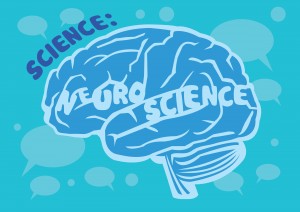It’s been
a long time since the Addiction Research Group have thrilled you with our
research roundup but that doesn't mean we haven’t been hard at work. Here is a
summary of our last year’s work! We’ll start with an overview of just some of the
papers that have been published in the last 12 months (there was not space to
cover them all so the remaining can be found at the end of this post).
A paper by Abi Rose, Charlotte Hardman and
Paul Christiansen published in Appetite investigated the effects of alcohol
consumption and the environment on snacking behaviour. In either a bar lab or
sterile lab, social drinkers received a priming dose of alcohol or soft drink
and completed a taste test, as well as ratings of alcohol, snack and appetite
urge. Participants in the alcohol group consumed more calories (including drink
calories) compared to the soft drink group; therefore, alcohol calories were
not compensated for by a reduction in food intake, suggesting alcohol may
disrupt appetite signals or make food more appealing. Additionally, the results
demonstrated that a larger proportion of unhealthy snacks were consumed in the
bar lab, particularly in people who were disinhibited. This suggests particular
personality characteristics increase susceptibility to alcohol’s effects on
eating.
Another study by Paul Christiansen, Rosie
Mansfield, Jay Duckworth, Matt Field and Andy Jones published in Drug and
Alcohol Dependence involved a group of social drinkers completing variations of
the alcohol-related visual probe task. This was to investigate whether
incorporating eye-tracking and personalised stimuli to the task would improve
its internal reliability. The results demonstrated that internal reliability
was highest for personalised (versus general) alcohol stimuli and for
eye-tracking (versus manual reaction time) measures of attentional bias.
Therefore, the study suggests that incorporating these methods can improve the
internal reliability of the alcohol-related visual probe task.
A paper by Lisa Di Lemma, Joanne Dickson, Pawel
Jedras and Matt Field was published in Frontiers in Psychology. This reported
results from three studies which investigated the independence of the approach
(indulge) and avoidance (abstain) motivational orientations for alcohol.
Participants watched brief videos and completed self-report and implicit
measures of alcohol-related approach and avoidance. In all three studies, it
was found that self-report increases in approach inclinations were accompanied
by parallel decreases in avoidance inclinations and vice versa. This suggests
that subjective approach and avoidance inclinations for alcohol tend to
fluctuate in parallel, which questions their degree of independence. However, the study also involved a combined
analysis of data from all three studies. This in fact demonstrated that changes
in inclinations to drink were partially independent of changes in inclinations
to avoid alcohol.
Andy Jones,
Lisa Di Lemma, Eric Robinson, Paul Christiansen and Matt Field published a meta-analysis in Appetite investigating lab
studies of inhibitory control training (where participants learn to associate
appetitive cues with inhibition of behaviour) for appetitive behaviour change.
They found that the effects of inhibitory control training on behaviour were
comparable to those produced by other psychological interventions, suggesting
that it is efficient for short-term behaviour change in the laboratory.
Natasha Clarke,
Matt Field and Abi Rose published a paper in PLoS One on the effect of a
brief personalised intervention for students. The study found that an active
control (engaging with alcohol-related information) was just as effective at
reducing alcohol consumption and binges as the personalised feedback
intervention at a two-week follow-up. This suggests providing information can
be just as efficient as more time consuming methods, if the information is
engaged with.
And
finally, last but by no means least, Helen Ruddock, Joanne Dickson, Matt Field
and Charlotte Hardman published a study
in Appetite on the concept of food addiction. Participants completed a
questionnaire online which asked whether they perceived themselves to be a food
addict. The answers were analysed and gave an interesting insight into
self-perceived food addiction. Characteristics of people who defined themselves
as food addicts included eating for reward, being preoccupied with food, low
self-control, frequent food cravings, increased weight and a problem with
certain foods. This qualitative study is the first to provide insight into
beliefs about food addition in both self-perceived food addicts and
non-addicts.
We’ve been travelling around as usual. Matt, Andy,
Paul, Eric and Charlotte didn’t have to go far to attend the British
Psychological Society (BPS) symposium in Liverpool in May. Matt gave a
symposium at the British Association for Behavioural and Cognitive
Psychotherapies (BABCP) in Warwick and attended the British Association for
Psychopharmacology (BAP) in Bristol, both in July. Matt and Andy also travelled
to York and presented at the Society for the Study of Addiction conference.
PhD students have been busy too. A big group of us travelled
to Bristol in September and presented research posters at the UK Centre for
Tobacco and Alcohol Studies (UKCTAS) early career meeting. Andy, Inge, Jay and
Natasha ran their first ever workshop on novel methods in public health
research at the UK Centres for Public Health Excellence (UKCRC) conference in
Edinburgh in November. A bunch of us also went to Newcastle in December for the
UK Society for Behavioural Medicine (UKSBM) conference, where Eric, Lisa,
Graeme gave talks and Andy, Mrunal, Lisa and Natasha presented their posters.
And finally back round to Liverpool for the North West Alcohol Conference (NWAC)
in November, of which a brilliant summary by Laura, Graeme and Panos can be
found here.
We’ve also been blogging away for the Mental Elf.
Matt has covered
e-cigs and tobacco smoking in youth and written his response
to claims made in a paper critiquing the brain
disease model of addiction, a very interesting read! Andy has
contributed with articles on
cigarette smoking and vulnerability for cannabis dependence,
increasing
adherence to smoking cessation medications and substance
use disorders increasing mortality following release from prison.
Paul has covered the effect
of MDMA and compassionate imagery on self-compassion
and varenicline,
smoking reduction and smoking cessation. Natasha has also
looked at varenicline
and the risks of neuropsychiatric adverse events and death,
and has covered
pharmacotherapy for anxiety and comorbid alcohol use disorders
and parental
drinking’s influence on children’s drinking.
Finally we welcome our new PhD student Laura Baines,
who has done a brilliant job covering some of our new published research in
this roundup.
Thanks for reading. We promise we won’t leave it as
long till the next time! If you have any questions contact Prof Matt
field, and if you are interested in taking part in
research you can find our current studies here.
Other
(equally as important!) papers published by the Addiction Research Group in
2015:
Eric Robinson, Andy Jones, Paul Christiansen and
Matt Field - Drinking like everyone else: Trait self-control
moderates the association between peer and personal heavy episodic drinking
Andy Jones
and Matt Field - Alcohol-related and negatively
valenced cues increase motor and oculomotor disinhibition in social drinkers
Paul
Christiansen and Matt Field - Less than meets the eye: Reappraising the
clinical relevance of attentional bias in addiction









